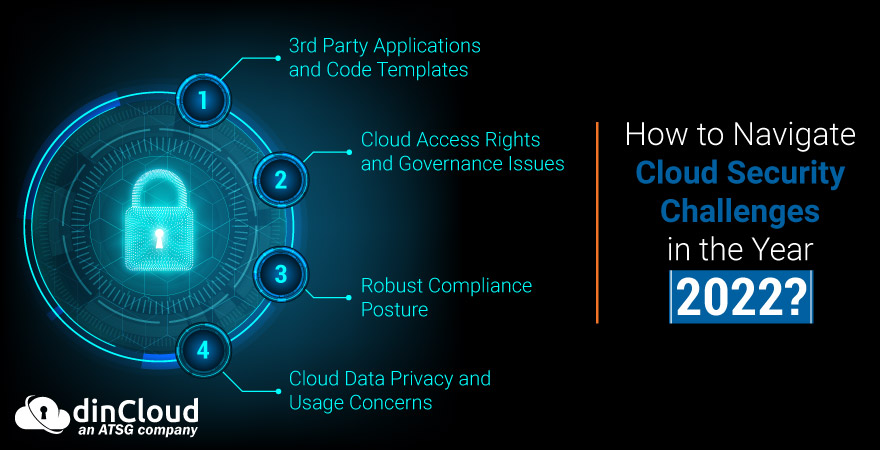The proliferation of cloud based services and solutions is showing no signs of slowing down, as we enter a new year 2022. However, with this unprecedented spike in the demand for cloud solutions, security related challenges are also emerging rapidly.
Not only is enterprise data moving to cloud infrastructures, but organizations are rapidly moving their business applications and workloads to the Cloud as well. This in turn results in an exponential increase in the overall threat surface.

This proliferation of the Cloud has not gone un-noticed by cyber criminals across the globe. They are also seeing the “window of opportunity” that lies before them, and will pounce on the minutest of vulnerability they find in cloud deployments.
Related: The Cyber Security Outlook by Gartner for 2022 and Beyond
In this post, we will sum up some of the major cyber security challenges and opportunities related to cloud infrastructures for the year 2022.
3rd Party Applications and Code Templates
In a bid to leverage the maximum output from cloud infrastructures, enterprises are rapidly deploying applications in the Cloud. Further, organizations are undertaking fast track development activities on cloud infrastructures to accommodate legacy workloads.
As a result, there is a rapid increase in the use of 3rd party applications and third party code templates. While this is not something harmful in itself, deploying enterprises need to be mindful of their accompanying risks, and thus undertake stringent auditing.
According to a recent study, a whopping 96% of third party containerized apps are rife with known vulnerabilities. Nearly 63% of third party code templates, used to reduce development cycles, were found to contain insecure configurations that can be exploited.
Related: 4 Security Risks of Windows and How to Prevent Them
Cloud Access Rights and Governance Issues
From a full-on remote work scenario, the world is pivoting towards a hybrid workforce. This means that managing security and privacy risks could become even more challenging, as a hybrid environment will accompany risk elements of both models.
So, the foremost challenge will be to set contextually aware, all-encompassing access controls around cloud deployments. This concept begins from user authentication, and goes all the way up to Zero Trust Network Architectures (ZTNA).
It is imperative for enterprises that are leveraging the Cloud heavily that they fully document which users have access to which cloud resources, and why? The access to cloud resources should purely be on the basis of job role, rather than someone’s position.
Related: Security Benefits of Cloud Computing Solutions
Robust Compliance Posture
With more and more data finding its way to the Cloud, enterprises need to remain fully aware of regulatory and compliance challenges. If an organization operates in multiple jurisdictions simultaneously, the compliance needs could vary to a huge extent.
Over the Cloud, it is also equally important for enterprises to keep track of where their Cloud Service Provider’s data centers are, which will be housing the data. Secondly, do the applicable regulations allow for data to be stored beyond a certain jurisdiction?
Enterprises will need to find clear answers to such questions, as a robust compliance posture not only sends a good message to the regulators, but also the other key stakeholders like investors, partners, vendors and mostly importantly, customers.
Cloud Data Privacy and Usage Concerns
With every passing day, the actual “owners” of data are getting more say in how and when their personal data is collected, used, and finally disposed of. This comes amidst an evolving regulatory landscape around data management.
Therefore, enterprises will have to navigate the area of how they use sensitive data with a lot of caution. They will now also be accountable for the measures undertaken to protect the privacy of sensitive data, so it does not fall into the wrong hands.
So, enterprises will have to chalk out specific plans and mechanisms whereby they protect the privacy of sensitive data, while using it in a responsible way. This trend in data management could also pave the way for the use of “synthetic data” instead.
Related: Security Hygiene and Posture Management
Conclusion
The manner in which cloud solutions and infrastructures are evolving, we are slowing but surely moving towards consolidation of security platforms. By the year 2025, it is expected that 80% of enterprises will have a unified vendor for their data management needs.
If you are an enterprise that is finding it hard to navigate the security and privacy of data in the Cloud, then dinCloud’s secure and compliant solutions are the best fit for you.


